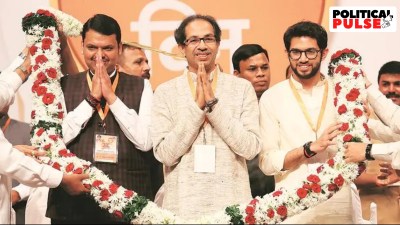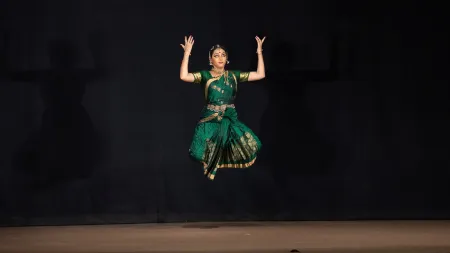- India
- International
‘Happy the SC took notice of archaeological findings in Ramjanambhoomi verdict’: Archaeologist BB Lal
In his centenary year, archaeologist BB Lal exclusively talks about assessing the historicity of the Mahabharata and the need to define clear objectives during excavation.
 “A seeker after truth keeps on getting satisfaction from everything he does,” says the archaeologist. (Photo: BB Lal)
“A seeker after truth keeps on getting satisfaction from everything he does,” says the archaeologist. (Photo: BB Lal)
On May 2, India’s senior-most archaeologist and Padma Bhushan awardee BB Lal entered his 100th year. Lal, who s actively involved in archaeological research and writing even at 99, was trained by Sir Mortimer Wheeler at Taxila in 1944, after which he joined the Archaeological Survey of India and served as its Director-General from 1968 to 1972. Delhi-based Lal also served on various UNESCO committees. In a career spanning over five decades, Lal excavated several important landmark sites, including Hastinapura (Utttar Pradesh), Sisupalgarh (Odisha), Purana Qila (Delhi) and Kalibangan (Rajasthan). From 1975-76 onwards, Lal investigated sites like Ayodhya, Bharadvaja Ashrama, Sringaverapura, Nandigrama and Chitrakoota under his ‘Archaeology of Ramayana Sites’ project.
Excerpts from an exclusive interview:
As an archaeologist, what has been the most satisfying moment of your life to date?
A seeker after truth keeps on getting satisfaction from everything he does. Thus, each new problem that I tackled gave me satisfaction. However, the first major satisfaction came when in the 1950s I was able to establish, through archaeological fieldwork, the historicity of the Mahabharata.
You had carried out excavations at sites associated with the Mahabharata. This is one of the most debated subjects of ancient Indian history. Several people think that the Mahabharata is nothing but a figment of the imagination.
Indeed, there are two extremely divergent views about it. According to one, everything mentioned in the text is true to the very letter, while the other view regards it as nothing but the poet’s imagination.
What is the way to ascertain the truth?

As an archaeologist, I decided in the 1950s to explore and excavate sites associated with the story. Luckily, all these sites continue to bear the same names even today as they did in antiquity, for example, Hastinapura, the capital of the Kauravas; Mathura, from where Krishna hailed; or Kurukshetra, where the great war took place. Explorations at all the sites revealed that these contained in their lowest levels very distinctive pottery, grey in fabric and painted with designs in black colour, now called the Painted Grey Ware. This established their cultural linkage around circa 1000 BC, the central date for that ware.
There may be cultural uniformity of these sites, but does this establish the historicity of the Mahabharata?
To go deeper into the matter, I decided to excavate the key site of Hastinapura. It is located on the right bank of the Ganga in Meerut district of Uttar Pradesh. The results were very significant. It was found that the eastern part of the mound was washed away by a massive flood in the Ganga. This discovery made me look for corroborative evidence in ancient literature and to my great surprise, it was there. The Matsya Purana and Vayu Purana emphatically refer to this flood. What the text says roughly translates as: “When the city of Hastinapura will be washed away by the Ganga, Nichkshu will abandon it and shift the capital to Kaushambi”. Thus, there is complete corroboration between archaeology and literature about the flood.
But you have not made any specific mention about the date of the war.
In the genealogical list given in the Puranas, there occurs the name of Udayana as the 24th ruler from Parikshit. It is well-known that Udayana was a contemporary of Buddha. Since Buddha died in 483 BC, Udayana may well have ruled around 500 BC. I took a count of all the Indian ruling dynasties, from the Mauryas to the Mughals, and discovered that the average reign per ruler was only 13.55 years. Even after upgrading this average to 15-20 years, we come to 980 BC for Parikshit, who ascended the throne after the Mahabharata war.
While historians seem to agree with this dating, astronomers usually take the date back to circa 3000 BC. What is your opinion about that?
I have two very significant questions against that date. Archaeological evidence shows that around 3000 BC none of the Mahabharata sites were in existence, so how can you enact the Mahabharata without Hastinapura and Mathura? Secondly, if I accept this date, the average reign per ruler will come to 145 years. It beats all imagination.
Coming back to the present times. How did you feel when the Ram Janambhoomi verdict was announced last year?
Archaeological investigations had clearly established that there was a temple at the site before the construction of the mosque, and we were happy that the Supreme Court took due notice of this fact in pronouncing its judgment.
Is there a message you want to give to the new generation of archaeologists?
My advice to all the field-archaeologists is: (i) Define your objective clearly and then after due exploration choose your site for excavation; (ii) Be entirely objective in your analysis of the data obtained. No subjectivity should be allowed to creep in; (iii) Try to publish your results as early as possible; (iv) Keep your eyes and ears wide open.
I will give an example from my life. Once, on a wet day in the ‘60s, when I took out my car from the garage and reversed it to go away, I observed that at the point of intersection, the edges of the earlier tyre-marks were obliterated by the later tyre marks. This set me thinking if I could find (in my then-current excavation) at Kalibangan, potsherds bearing inscriptions with overriding signs, I might be able to determine whether the inscription was written from right to left or the other way round. I was lucky to get a few potsherds on which the signs on the right were partly overrun by those on the left. This clearly established that the inscriptions were written from the right to the left. A paper dealing with this discovery was published in Antiquity (England) and hailed the world over.
Apr 20: Latest News
- 01
- 02
- 03
- 04
- 05



































